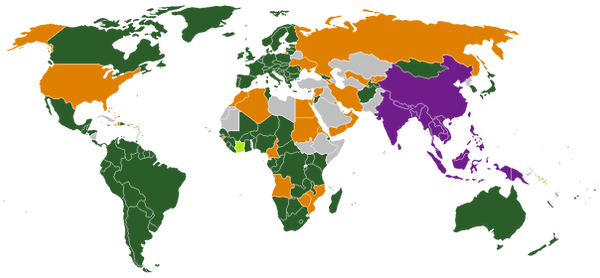Butterfly populations are a very good indicator of the health of an area's ecosystem !!
Stichophthalma Howqua are fairly large butterflies that are quite mobile and can be found in habitats where nectar rich flowers are abundant.
Gardens, meadows, and woodland edges during warm sunny days are ideal to spot them as they feed or look for mates.
They serve an essential role in the ecosystem as a pollinators.
While fluttering from flower to flower in search of nectar, they inadvertently transfer pollen, assisting in plant reproduction.
Their vibrant patterns, evolved to ward off predators, also make them garden favorites.
Males have ocher yellow heads, dark brown antennae with bare inner sides, and a protruding labia.
The back is dark brown and the ventral side is milky white.
The dorsal thorax is ocher brown, the ventral side is milky yellow, and the legs are milky yellow.
The tarsus of the forelegs are fused and have thorn like hairs.
The dorsal abdomen is ocher brown and the ventral side is ocher yellow.
The forewings are nearly triangular, with a slightly convex front edge and a straight outer edge.
The hindwings are fan shaped and slightly wavy.
The back of the wings is orange yellow to ocher yellow, the outer side of the forewings is slightly lighter, with dark brown spots at the wing tips, and a row of dark brown arrow shaped patterns on the wing edges.
The hindwings have orange oval spots and sex marks near the base.
The ventral side of the wings is milky yellow to orange yellow, with a row of bright ocher brown eye spots in the center, a wide black edged band on the inner side of the forewings and hindwings, two dark brown thin bands on the sub outer edge, and a dark brown spot on the anal area.
There is a short dark brown stripe at the end of the middle cell of the forewing.
Females are quite similar in appearance to males, although slightly larger and they have lighter wing bases, larger and lighter markings, a more distinct central brown band, no sex marks, and segmented, hairless tarsus on the forelegs.
The margins are orange yellow or brown.
Having wings that mimic decaying leaves, they employ a remarkable camouflage technique, aligning the vein like patterns on their wings with existing foliage to camouflage themselves from predators.
Potential predators include birds, spiders, predatory insects, mammals, and reptiles.
* As members of the Brush Footed (Nymphalidae) family, they use their shorter pair of front legs for food tasting and their two pairs of longer rear legs for propulsion.



